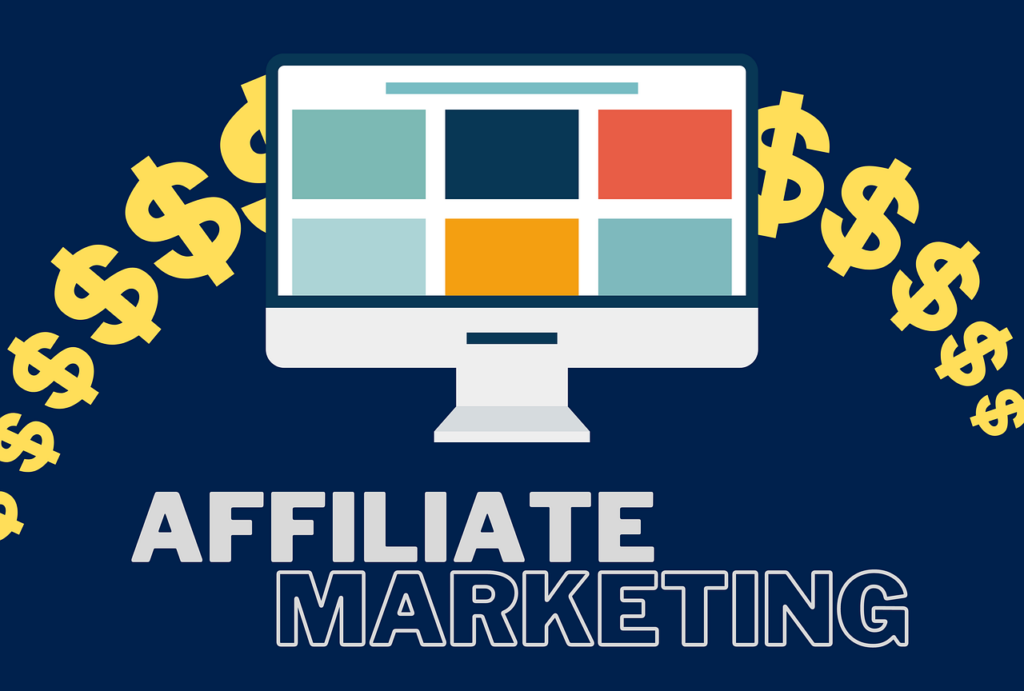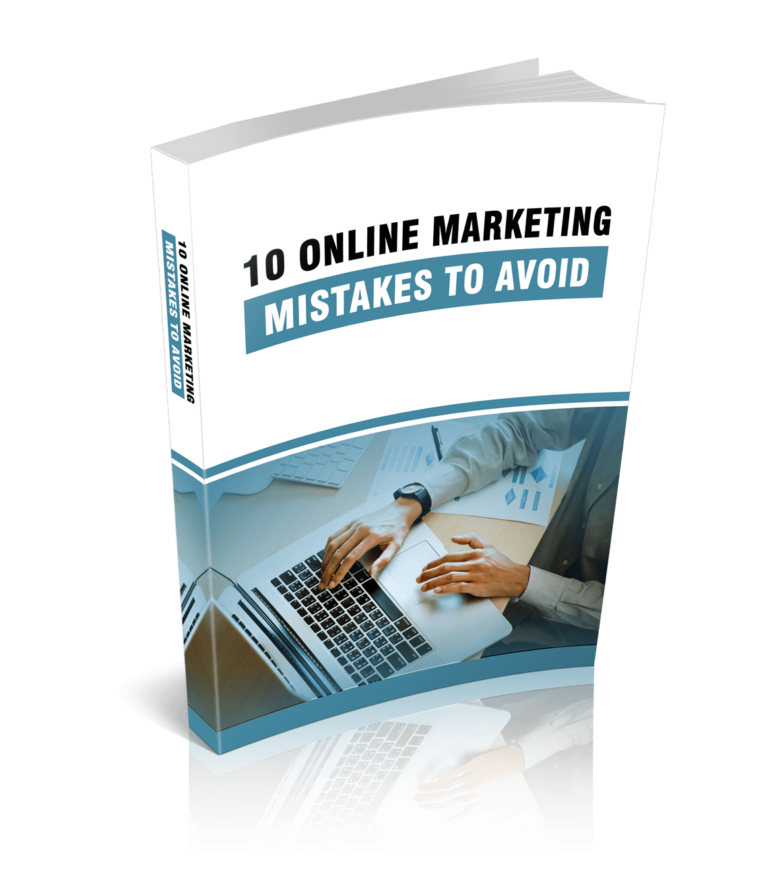Content marketing is one of the best ways to raise brand awareness, attract your audience, turn prospects into buyers, and increase sales. Countless businesses rely on it to form lasting relations with clients, enhance sales, build brand authority, and reach their goals. If you want to leverage content marketing to grow your business and take it to the next level, follow this 10-day content marketing plan.
SUBSCRIBE TO INCOME PATROL
Get updates on the latest posts and more from Income Patrol straight to your inbox.
DAY 1. PICK A NICHE
This is the first and most important step you need to take. So, pick a niche and stick to it. Know what you want to focus on and decide what sort of content you want to share so you can attract the right people.
Aim to become a trusted source for that particular subject and make sure you choose a niche that’s in line with your business. That way, it will be easy for potential customers to engage in business with you once you start promoting.
So, when picking your niche, know what you want to achieve and keep your eye on the long-term goal.
Set clear goals and write down what you want to achieve from your content marketing efforts. For example, do you want to build industry authority? Do you want to raise brand awareness and drive traffic to your site? Do you want to work with influencers, get quality backlinks, and boost social media engagement?
Day 1 is about picking a niche and clearly defining your goal. So, focus on that before moving on to the next step.
DAY 2. IDENTIFY YOUR AUDIENCE
Once you choose a niche and set your goals, identify your audience. Know who you want to reach, and find out how you’ll get them to engage with your content.
Consider your goals and the type of content you want to publish when defining your audience. Answer key questions: Who is my target audience? What are their interests? And how can I get them to read, like, and share the content?
Your goal is to target the right people and get noticed by individuals who are more likely to engage in business with you. So, state who you want to connect and share your content with.
You can define your audience based on geographical location, interests, profession, hobbies, gender, age, and so on. Focus on people who are interested in the kind of content you are sharing and ones interested in services or products similar to yours. This is a great way to reach a bigger audience, attract more people, and increase your chances of success.
DAY 3. CONDUCT MARKET RESEARCH
Now that you’ve chosen your niche and defined your audience, conduct market research. Find out whether or not people need or read the type of content you want to share.
Analyze customer behavior with Google Analytics or the best social media analytics tools like HubSpot, Sprout Social, and BuzzSumo.
Google Analytics helps you learn more about your target audience. Find out which of your web pages they engage with the most. How long they stay on them and the actions they take. So, use it to gain insights into the type of information your audience favors.
Use the social media analytics tools listed above to learn more about the type of people who are interested in your services or products.
The tools give you valuable data related to campaign performance, audience demographics, and so on.
Next, conduct a content audit. Determine how effective your existing content is. This only applies if you are already doing content marketing. If not, just skip to Day 4.
So, if you are already using content marketing to reach your business goals, run a content audit. Make sure all your content gets the attention needed. If some of your pages have zero engagement, optimize your content.
Determine why you are failing to get the attention you need and make the necessary changes. If you need to market your content more, do so. If you need to optimize it for SEO, do so. If it’s not relevant to your audience, delete it and only share content that your audience is interested in.
DAY 4. DO KEYWORD RESEARCH
Day 3 focused on analyzing your audience’s behavior. Day 4 is about doing keyword research so you can incorporate it into your content strategy and start ranking on search engines.
Make sure you choose and use the right keywords to increase your chances of success. Don’t rush through this process. Take your time and make sure you choose the best phrases that guarantee results.
Identify high-ranking keywords in your niche or words commonly used by your target audience when conducting searches. Use them on your topics and throughout your content.
Use keyword research tools like SEMrush, Ubersuggest, Google Trends, Google Keyword Planner, SpyFu, or KW Finder.
The research tools can help you find competitor keywords, long-tail keywords, generic keywords, navigational keywords, geo-targeted keywords, and so on.
Write down all the keywords that are most likely to get you the results you want and incorporate them into your content.
DAY 5. USE THE RIGHT PLATFORMS
Decide which platforms to work with. Choose the channels that prospects prefer and spend most of their time on. Doing this will help you effectively reach and connect with your audience.
Consider your audience and the type of content formats they prefer so you can cater to their needs.
Use the right social media platforms for better engagement and conversions.
If your audience prefers, videos, for example, YouTube and Facebook are the best platforms to share your content on. If they prefer images, Instagram and Pinterest are your best shot. If they prefer text, images, or short videos, Twitter and TikTok will serve you well.
Your success depends on the quality of your content, the platform you choose, and how well you use it. So, make sure you pick a platform that your audience favors.
DAY 6. BUILD A FOLLOWING
One of the best things about content marketing is that you can use it to build trust, raise brand awareness, and increase your conversion rates. However, the only way to accomplish that is to get people to engage with your content. You need to make sure they like, share, and comment on your posts. You need to get them talking about your content and excited about what you share.
That’s why building a following is important. So, Day 6 is about getting more social media followers.
The best ways to achieve this is by being consistent across all platforms, sharing great content, engaging with your audience, using hashtags, connecting with industry experts, and marketing your blog posts. If you have a blog.
If you have two or more platforms, make sure you stick to your brand message and share the same message throughout the networks. Doing this shows you know what you are talking about, makes it easy for people to connect with you, and trust what you are sharing.
Only upload valuable content to get the attention you need. So, before publishing each post ask yourself how it’s going to benefit your audience. What sort of value does it bring?
Sharing valuable and interesting content attracts shares, comments, and likes. So, make sure every post adds some sort of value to your audience’s lives.
The types of posts you share determine your engagement metrics and the number of followers you get. So, make sure you share the right post on the right platform. For example, use more hashtags and images on Instagram and Twitter. Use more videos and text on Facebook and YouTube.
Don’t focus too much on publishing your own content and getting people to interact with it and fail to engage with theirs.
Connect with your audience, engage with their content, and respond to questions or comments. Focus more on building relations and less on marketing your work. That is how you capture attention, gain trust, and attract more followers.
Understand that building a following doesn’t happen overnight and it isn’t something you do once and forget about. You have to be consistent and patient. So, implement these strategies daily or as often as you can to ensure the desired results.
DAY 7. SOLVE A PROBLEM
The most effective way to attract your target audience, boost engagement, and form lasting relationships is to add extra value to potential customers.
You want your site or social media platforms to be the first place they come to for certain information. You want them to know you have answers to their questions and effective solutions to their problems.
So, identify common problems and challenges that your audience has and offer solutions.
Consider your main service, product, or business offer. What problem do you solve with it? How does your product benefit customers? What is it designed for? Does it make customers’ lives easier? Does it save them time or money? Does it help them grow their businesses? Whatever it is, focus on it and connect it with the content you share.
For example, if you own an accounting firm and target small businesses, focus on educational content. Teach your audience about the importance of bookkeeping, how it impacts your business, and so on.
Identify a common problem or challenge that your audience has and offer practical solutions. If prospects have a hard time finding certain information related to your offer, for example, share content that will help them find the information they need.
Make sure your content caters to everyone at different stages of the buyer’s journey. For instance, your existing customers and people who are not yet your clients. Publish content that helps your existing customers mitigate known challenges and content that helps prospects identify their needs and solve specific problems.
Offer solutions with your content and cater to your audience’s needs for credibility. When potential customers trust what you share and know you always have the right solution, they will gladly buy your product.
DAY 8. BECOME A BLOGGER
Content marketing is about writing and sharing content repeatedly. You want to make sure you are the ultimate source for certain information. You want to add value to your audience’s lives and keep them engaged.
The best way to achieve that is to start blogging.
A blog makes it easy for you to share long-form content and attract your audience. So, create a WordPress blog or start blogging on Medium.
You can either hire a designer on freelancing sites to design your WordPress blog or do it yourself. If you choose to design it yourself, make sure you use a professional template to avoid frustrations later on.
Read the reviews to learn more about it. Make sure you pick a template that has all the features you need and one that’s constantly updated.
If you want to work with Medium, go to medium.com and start blogging. It’s as easy as that. All you have to do is create your account and start writing.
Use different content formats to capture your audience’s attention and retain it. Don’t focus on plain text alone on your blog. Mix it up to get the attention you need and retain it. Incorporate high-quality images and videos. Use podcasts, webinars, interviews, Q&A sessions, and so on.
Create engaging content that gets people talking and sharing. The kind that interests your audience and keeps them coming back. Share the latest industry trends and news to capture attention. Write how-to guides, listicles, infographics, and review articles.
The goal is to constantly share interactive and valuable content that keeps your audience coming back to your blog.
So, create an effective content strategy that will help you write constantly and keep your audience engaged. Make sure you post regularly to retain your audience.
DAY 9. HAVE A CONTENT CALENDAR
Writing frequently, posting repeatedly, and managing your content can be challenging. That’s why you need a content calendar. It will help you write frequently and stick to your publishing schedule so you don’t lose your followers.
So, decide how often you’ll write and publish your content. This will make it easy for your readers to know when you’ll upload your next post. You can publish daily or 3 times a week. Depending on your time, audience, and preferences.
The most important thing to do is choose your publication days and stick to them. For example, if you want to write and publish something new 3 days a week, pick your days. If you choose to post on Mondays, Wednesdays, and Thursdays, make sure you do precisely that.
Use the best tools to generate exciting topics and ensure you never run out of things to write about.
Some of the best tools to work with are HubSpot’s blog topic generator, UberSuggest, SEMrush, Answer the Public, and BuzzSumo.
Use social media scheduling tools for your social media posts.
Some of the best tools to work with are Sprout Social, Loomly, Sendible, Buffer, TweetDeck, and SocialPilot.
Writing quality content and having a content calendar isn’t enough. You have to promote your content and reach as many people as you can.
So, share snippets of your blog posts across social media, in your emails, and on Quora or other online forums.
Take it a step further and run paid ads to increase traffic to your site and reach an even bigger audience.
DAY 10. MEASURE RESULTS
Measure results to determine how far or close you are to reaching your set goals. Find out whether your content strategy is effective or not. Identify areas that need improvement and make the necessary changes.
Find out which areas you are succeeding in and use the same methods to improve where you’re lacking.
Identify high-performing content and posts with little or zero engagement.
Know what separates high-performing posts from ones with less traffic.
What do your best posts have in common? What attracts people to them? What are your followers talking about? What are they saying about your posts?
Use the information you gather to improve posts that are failing to attract the attention you need.
For example, if your audience is drawn to how visual your content is, incorporate images on posts with little engagement. If they are attracted to the way the information is presented. For example, if you used infographics and shared statistics, do the same on posts with less traffic.
Use Google Analytics or SEMrush to find the information you need.
Use social media analytics tools like BuzzSumo, Sprout Social, Keyhole, and HubSpot to track your content performance.
These tools help you track your social presence, identify popular posts, measure social sharing activity, and monitor progress. They make it easy for you to understand your content strategy better and improve where needed.
If you don’t like what you see after measuring the results, find out what you are doing wrong and what you need to change.
For example, if you realize you haven’t reached any of your goals after doing the work, go through the listed daily exercises and find out what you need to change.
If you are targeting the wrong people, change your target audience. If you are curating content that your audience isn’t interested in, find out from them what sort of content they want access to. If you need to promote your content more, go ahead and do so.
Your content strategy is only effective when you do it right. So, take the mentioned steps to start seeing results.
LIMITED-TIME OFFER!
With LIFETIME ACCESS membership ($67) you have access to ALL exclusive materials (current and upcoming) for lifetime. We create new courses, ebooks, webinars and downloads on a regular basis. This offer expires soon and will be replaced with monthly-paid subscription, so hurry up! Get access HERE!





